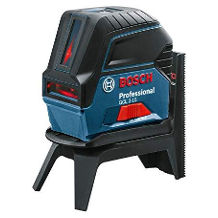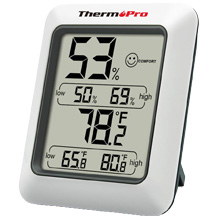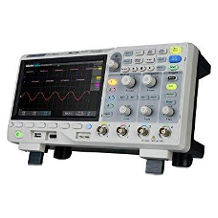PH meter purchasing advice: how to choose the right product
- What You Need to Know
- pH meters show whether an aqueous solution is basic, acidic or neutral.
- The devices are used to check the water quality, for example in the garden pool.
- Meters with integrated electrodes are inexpensive, but only suitable for testing liquids.
- For measurements in soil or food, devices with replaceable electrodes are necessary.
What does the pH value tell us?
In everyday life, we mostly hear about the pH value in connection with the quality of soil or drinking water or the skin compatibility of creams. You may remember the litmus test used to determine the pH value in chemistry lessons. If you have a garden, you may know that the pH value plays a major role in the growth of plants. Pool owners and aquarium enthusiasts should also always keep an eye on it. In addition, the pH value is important in many scientific and industrial applications. pH meters determine the acidity of a substance within a short time. But what does the pH value actually describe?
The abbreviation “pH” stands for “pondus hydrogenii” or “potentia hydrogenii”, i.e. the weight or effectiveness of hydrogen. The activity of hydrogen ions in a liquid is measured. This is used to determine the acidic or basic character of an aqueous solution. A common synonym for “basic” is “alkaline”.
Acidic, neutral or basic
We encounter acidic solutions every day. These are not necessarily liquids like lemon juice, which taste sour, but also beer, coffee and tea. Seawater and soap, on the other hand, are alkaline solutions. Many cleaning agents have an alkaline pH, which reduces the surface tension of water and makes cleaning easier. The neutral starting point of the pH scale is pure water with a pH of 7. By comparison, human skin has a pH of 5.5 and is thus in the acidic range. Liquids with a pH value above 7 are bases or alkaline solutions. The pH scale is logarithmic. This means that a liquid with a value of 4 has a concentration ten times higher than a solution with a value of 5.
| Substance | pH value | Tyoe |
| Battery acid | <1.0 | Acidic |
| Vinegar | 2.5 | Acidic |
| Beer | 4.5 | Acidic |
| Mineral water | 6.0 | Acidic |
| Pure water | 7.0 | Neutral |
| Sea water | 7.5–8.4 | Alkaline/basic |
| Soap | 9.0–10.0 | Alkaline/basic |
| Bleach | 12.5 | Alkaline/basic |
| Caustic soda | 13.5–14.0 | Alkaline/basic |
The pH value is important in these areas
The pH value does not only play a role in the laboratory, but also in the private sphere. For gardeners, it is an important reference point for the care of plants. Owners of aquariums or pools should also regularly check the pH value so that fish and people feel comfortable in the water.
Pool
The basis of good water quality in the pool is the neutral pH value. Pool owners should check this weekly during the bathing season. A pH that is too high or too low has a negative effect on the pool system and can cause eye and skin irritation in people. Pool water with a pH of 5.5 would be ideal for human skin, but is not good for processed fabrics and especially for our eyes. Acidic water irritates the eyes and causes itching. In water care, therefore, the pH value of the human tear fluid, which is 7.0 to 7.5, has become established.
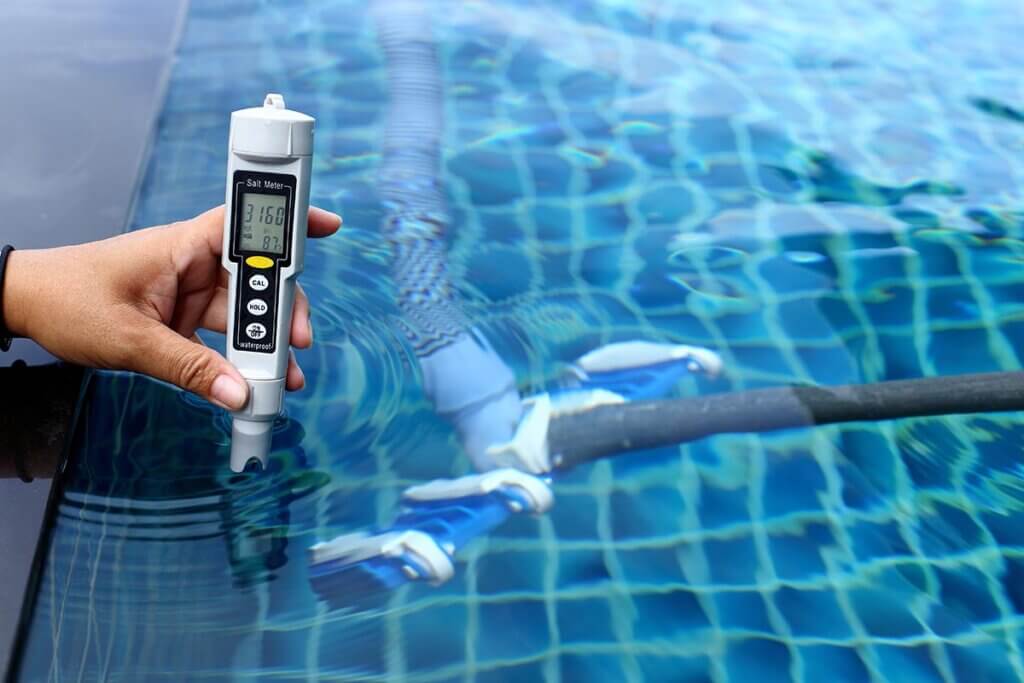
Aquarium
The pH value is one of the most important water values in an aquarium and should be measured regularly to ensure that fish and plants are doing well. They only survive in a certain pH range, which differs significantly depending on the species. Many inhabitants of water tanks prefer a pH value between 6.5 and 8.5. Specialist literature contains precise information on specific species. If the value changes, the fish become more susceptible to diseases and can absorb less oxygen from the water. It is therefore advisable to measure the pH value once a week and after every water change.
Garden
In the garden, a suitable pH value helps plants to thrive. Soils that are too acidic make life difficult for them. If the pH is too low, the nutrients in the soil are firmly bound and cannot be absorbed by the plants. Most plants react sensitively to a pH value below 5. In addition, heavy metals dissolve better in an overly acidic soil. They damage the roots of the plants, which results in stunted growth. Plants benefit from the activity of soil organisms. The pH value also has an influence on these. In soils that are too acidic, their activity decreases and can come to a complete standstill.
How does a measuring device determine the pH value?
A pH tester, also called a pH meter, measures voltage. When the glass electrode is immersed in a substance, an electrical potential is formed there. From the potential difference to the reference electrode, a voltage is generated that depicts the pH value.
What pH meters are available?
pH meters are available in two versions: with replaceable or integrated electrodes. The former are designed more for use in the laboratory. For home use, a device with an integrated electrode is usually sufficient.
pH meters with integrated electrode
Meters with an integrated electrode are mainly used for testing water, such as drinking water, pools, ponds and aquariums. The simple devices are inexpensive and easy to use. All you have to do is hold the integrated electrode in the water. After a short time, the pH value is shown on the display. Anyone who repeatedly takes the same measurement, such as checking the pH value in an aquarium, is well advised to use such a tester.
The disadvantage of the permanently integrated electrode is that the range of application is limited to liquids. Measurements on solid substances are therefore not possible. In addition, the whole device becomes useless as soon as the electrode is damaged. This type of pH meter therefore has only a limited useful life.
Pro points
- Inexpensive
- Compact
- Easy to use
Drawbacks
- Electrode cannot be replaced
- Only suitable for liquids
pH meters with replaceable electrode
In a pH tester with an exchangeable electrode, the sensor can be changed. This makes it possible to check other substances besides liquids, such as garden soil or food. When used in the garden, the soil electrode is inserted into the previously loosened soil. In the case of food, an insertion electrode is used.
In addition to the numerous application possibilities, the devices usually have a large display with extensive display functions. Compared to simple measuring devices with integrated electrodes, they also work much more precisely. The robust construction and the replaceable electrode guarantee a long service life. However, the advantages mentioned are reflected in the price. If you only want to check your pool, you can probably do without this more expensive tester. Its functions can be better exploited in the laboratory.
Pro points
- Various measurements possible
- Precise measurements
- Large display
Drawbacks
- Comparatively expensive
- Complicated handling
What you should look for when buying
Which pH meter is right for you depends above all on the measurements you want to make. Meters with integrated electrodes are handy, robust and easy to use. They are mainly used to check water quality. pH testers with replaceable electrodes provide more accurate results and allow measurements of different substances.
Measuring accuracy
The most important criterion when buying a pH meter is the measuring accuracy. As a rule, the devices do not provide exact results. Rather, a certain measurement uncertainty always remains, which varies depending on the quality of the pH tester. The decisive factor is therefore the smallest possible error range. An inaccuracy of 0.5, for example, means that with a measured pH value of 5.5, the actual value is between 5.0 and 6.0.
In order to obtain measurement results that are as accurate as possible, it is necessary to calibrate the pH measuring device regularly, i.e. to set it to a specific value. Many products come with the necessary substances, called “buffer solutions”. When buying, make sure that the solutions are included. Otherwise you will have to buy them later. A pH meter without calibration will permanently falsify measurement results. The buffer solutions correspond to certain pH values, for example 4, 7 and 10. After mixing the liquid, the measuring sensor is immersed in it with light circular movements. Pressing the corresponding calibration button does the rest.
Note that the pH value of a liquid is temperature-dependent. High-quality pH meters automatically take into account the temperature of the substance to be measured. With some devices, however, it is necessary to set them manually to the appropriate temperature.
Display and handling
A pH meter should be as easy to use as possible. In fact, most devices are quite simple in design. After the test electrode has made contact with the test substance, the display shows two values after a short time: the pH value at the top and the temperature below. Depending on the area of application, other data may be important. For pool owners, for example, the chlorine content of the water is relevant. A display of the battery level is also useful. In addition to the display, pH testers have an on-off button and devices with automatic calibration have a calibration button. If the pH value of the test substance is below or above the calibrated range, the display shows an error message.
If you do not take a water sample, but hold the meter directly in a pool or aquarium, there is a risk of it accidentally falling in. It is therefore advisable to buy a waterproof device. A device with an IP67 rating is temporarily waterproof, one with an IP68 rating is permanently waterproof. A wrist strap can also prevent it from falling down.
How much does a pH meter cost?
The price range for pH meters is relatively wide. The expensive devices are designed for professional use in the laboratory. Those who often perform the same measurement can get by with an inexpensive pH tester.
Inexpensive meters cost between 10 and 50 euros. In most cases, these are devices with a built-in pH electrode. However, especially inexpensive devices are subject to wear and tear, so that you will soon need a new one if you use it frequently.
Somewhat more expensive devices usually have a longer service life. If you regularly test different substances for their pH value, you should invest more money. High-quality and precise testing devices with replaceable electrodes can be found in the price range of 50 to 100 euros. These pH meters combine durability with versatility.
Hints for use
The electrode of a pH meter is sensitive to environmental influences, which is why it must be properly maintained and regularly cleaned. In order to obtain accurate measurement results in the long run, it is necessary to recalibrate the instrument after a few measurements.
Maintenance and cleaning
Careful maintenance ensures accurate measurement results and prolongs the service life of an electrode. Avoid direct contact with the sensor of the pH meter. This can cause damage and contamination to the electrode, which will affect the measurement results. If necessary, touch the sensor only with a soft paper, for example a handkerchief.
In the case of devices with replaceable electrodes, these are stored in a special storage solution. A storage solution adapted to your device is either already included in the set or is offered separately by the manufacturer. The electrode must never be stored in tap water, distilled water or deionised water, as this will cause irreparable damage.
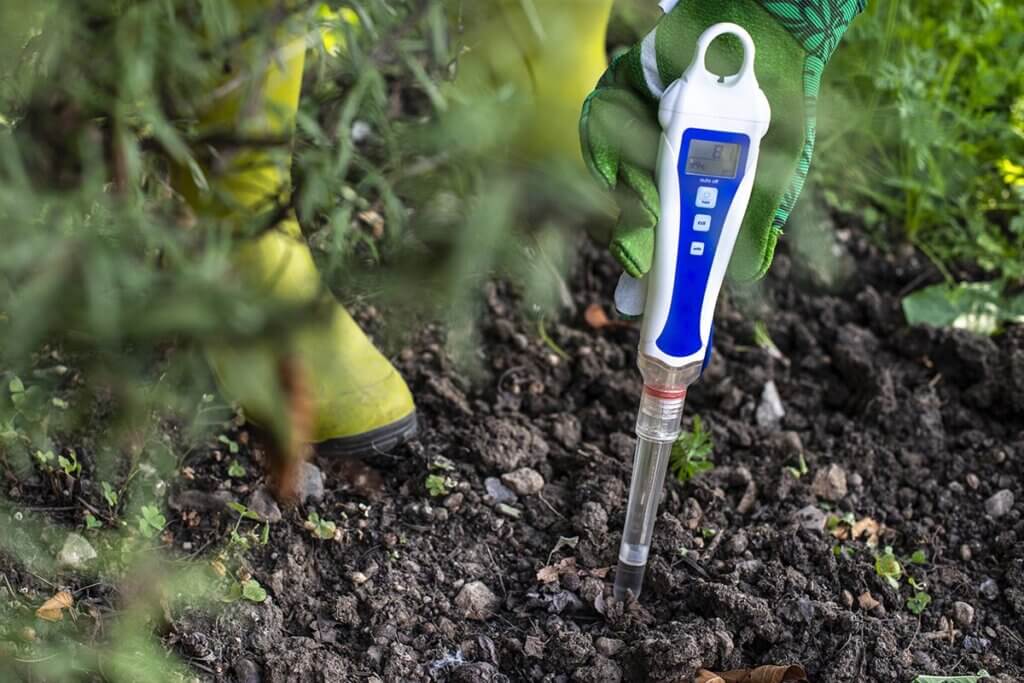
Long stabilisation times, erroneous readings and problems with calibration are indications that the electrode needs cleaning. The best way to do this is to follow the instructions in your instrument’s manual. It is usually recommended to rinse the electrode with distilled water or to place it in a special cleaning solution for a few minutes. Depending on the contamination, it may be necessary to use specific cleaning agents that specifically target contaminants such as grease, oil or protein.
How often does the unit need to be calibrated?
After cleaning, it is advisable to recalibrate the meter. Calibration is also necessary before first use, after a long period of non-use and before testing a new substance. If you always take the same measurement, it depends on individual use how often calibration is necessary. Over time, the displayed reading will move away from the calibration. How quickly this happens varies from device to device. Therefore, it is advisable to calibrate a new device more often to see how much the change is. This way you can adjust the time interval between calibrations. So there is no general guideline value.
Determining the pH value with test strips
An inexpensive alternative to a meter are pH test strips made of litmus paper. They can be bought for less than 10 euros in drugstores. The test strips only react with liquids and change colour depending on the pH value. With alkaline liquids they turn blue, with acidic liquids they turn red. The packs usually contain colour charts to help interpret the discolouration of the paper correctly. You can find similar test strips for soils in DIY and garden centres.

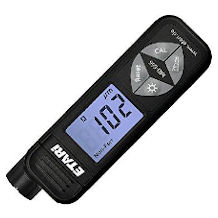
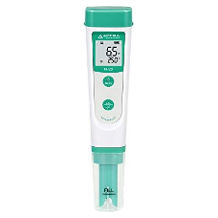

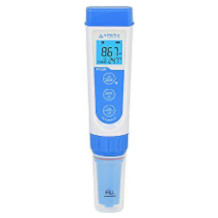
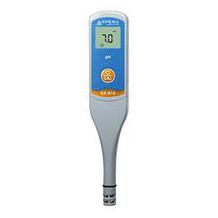
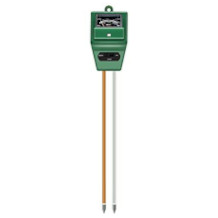
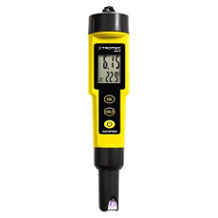
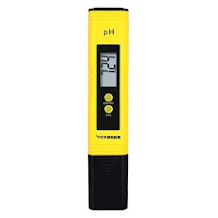
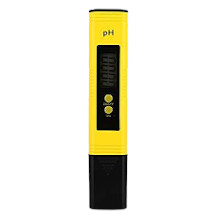

 6,868 reviews
6,868 reviews

